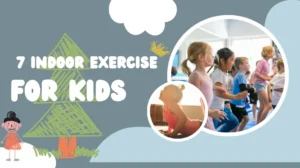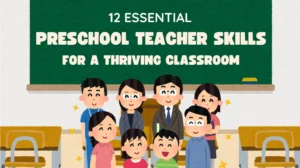As parents and educators, we always look for the best educational approach for our children. The diversity of educational philosophies can be overwhelming, and it’s easy to be unsure which approach is best. Waldorf education is an approach that has received a great deal of attention.
Waldorf education emphasizes holistic development, integrating intellectual, practical, and artistic activities to nurture well-rounded individuals. It focuses on imagination in learning, presenting academics through engaging and creative methods.
Developed by Rudolf Steiner, Waldorf education has attracted the interest of educators and parents worldwide. Many want to know how it compares to traditional educational models. Is it right for your child? Let’s delve into the fundamentals of Waldorf education and explore its unique approach to learning.
Waldorf Education: An Introduction
Waldorf education, developed by Rudolf Steiner in 1919, is a distinctive approach to learning that emphasizes holistic development across intellectual, artistic, and practical areas to cultivate well-rounded individuals. It’s grounded in Steiner’s Anthroposophy philosophy, which deeply advocates understanding human intellectual, physical, and emotional development.
Waldorf schools are part of a worldwide movement, with hundreds of schools and kindergartens established across various countries, each adapting the core principles to fit local cultural contexts. This global community is linked by shared values of creativity, respect for nature, and a commitment to fostering peaceful and sustainable futures.
Waldorf education offers a comprehensive, developmentally appropriate approach that instills a lifelong love of learning and an appreciation for cultural and artistic diversity. It suits families and educators who value an education system that balances academic skills with creative and practical experiences.
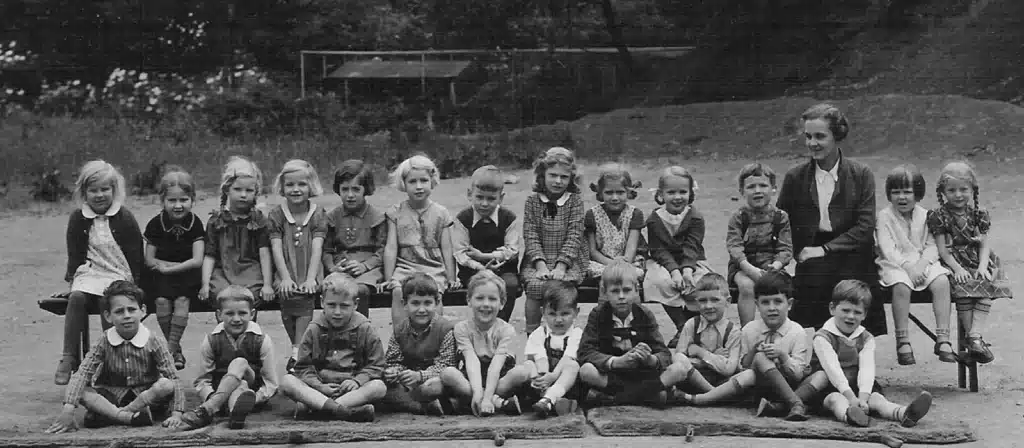
Origins of Waldorf Education
Waldorf education was founded by Austrian philosopher Rudolf Steiner in 1919. The first Waldorf school was established in Stuttgart, Germany, for the children of workers at the Waldorf-Astoria cigarette factory. Steiner’s vision was to create an educational system fostering holistic development and addressing the child’s needs.
Waldorf Principles of Education
Waldorf education is built on several core principles that distinguish it from conventional educational approaches:
- Holistic Development: Emphasis on intellectual, emotional, physical, and spiritual growth.
- Developmental Stages: Curriculum tailored to align with specific stages of child development.
- Artistic Expression: Integration of arts in daily lessons to enhance creativity.
- Imagination and Play: Use of imaginative play as a vital part of early childhood education.
- Community and Relationships: Strong focus on fostering community and interpersonal relationships.
Stages of Growth in Waldorf Education

Waldorf education structures its curriculum around the developmental stages identified by Rudolf Steiner:
- Early Childhood (0-7 years): Focus on imitation, play, and sensory experiences.
- Middle Childhood (7-14 years): Emphasis on imagination, storytelling, and artistic activities.
- Adolescence (14-21 years): Development of critical thinking, self-expression, and ethical reasoning.
These stages ensure the educational content and methods are developmentally appropriate, fostering natural growth.
What is Unique About the Waldorf Education System?
Waldorf education stands out due to its distinctive approach to teaching and learning, prioritizing the whole child’s development.
- Holistic Development: Waldorf schools focus on the intellectual, artistic, and practical skills of students, fostering a balanced growth of the head, heart, and hands.
- Imaginative Learning: The curriculum is designed to encourage creativity and imagination. Storytelling, arts, crafts, and music are significant in daily lessons.
- Developmental Stages: The Waldorf approach divides childhood into three seven-year stages, each with specific developmental focuses. Teaching methods are tailored to suit the needs of each stage.
- Teacher Continuity: In Waldorf schools, teachers often stay with the same group of students for several years, fostering a deeper understanding and connection.
- Integration of Arts and Academics: Artistic activities are integrated into all subjects to make learning more engaging and meaningful.
- Nature and Outdoors: Emphasizing a connection with nature, Waldorf schools often incorporate outdoor activities and natural materials in their teaching.
- Community and Collaboration: The Waldorf approach values strong community ties and encourages collaboration among students, teachers, and parents.
Benefits of Waldorf Education
Waldorf education offers numerous benefits, contributing to the overall development of children. Let’s explore these in detail.
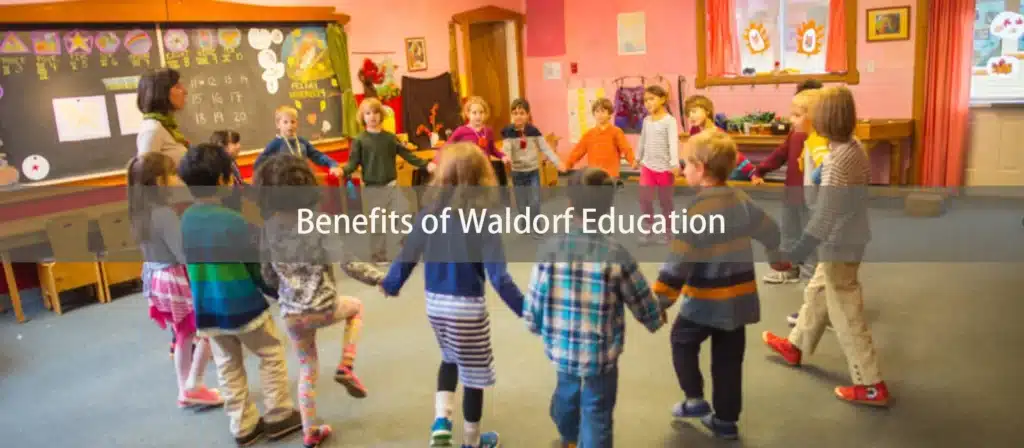
Learning is based on play
Play is a fundamental aspect of Waldorf education. Through play, children develop essential social, emotional, and cognitive skills. It encourages imagination and creativity, allowing children to explore and understand the world around them.
In Waldorf education, play is seen as a vital part of learning. It helps children develop problem-solving skills, learn to work collaboratively and enhance their creativity.
Learning is hands-on
Waldorf education emphasizes experiential learning, where children engage in hands-on activities. This approach helps children tangibly connect with their learning material, making lessons more meaningful and memorable.
Hands-on learning allows children to understand concepts more deeply. By engaging in practical activities, they develop critical thinking and problem-solving skills. This method encourages active participation, making learning an exciting and dynamic process.
Technology is not used in the classroom
Technology is intentionally minimized in Waldorf schools, especially in the early years. This allows children to develop their imagination, creativity, and interpersonal skills without the distraction of screens and digital devices.
Develops well-rounded individuals
Waldorf education aims to develop well-rounded individuals by addressing a child’s intellectual, emotional, and physical growth. The curriculum is designed to nurture the whole child, fostering a balanced development.
Nature Connection
Regular outdoor activities and using natural materials help children develop a deep appreciation for nature.
Disadvantages of Waldorf Education
While Waldorf education offers many advantages, it also presents some challenges. Let’s explore these in detail.
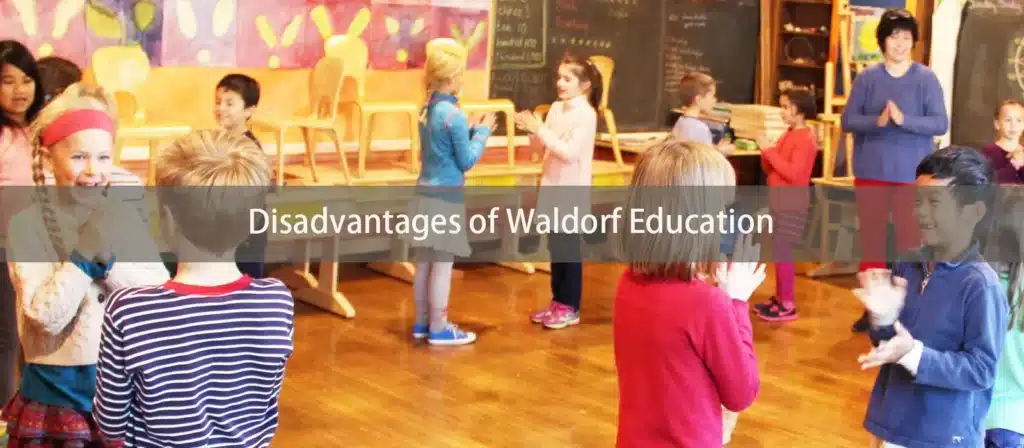
Lack of focus on academics
One of the primary criticisms of Waldorf education is its perceived lack of emphasis on academic rigor. While the holistic approach is beneficial, some parents and educators feel that it may not adequately prepare students for the demands of higher education and competitive careers.
Role of Teachers
In Waldorf education, teachers often stay with the same class for several years. While this provides continuity and a deep understanding of each child, it can also lead to potential drawbacks.
The prolonged teacher-student relationship may result in limited exposure to different teaching styles and perspectives. Additionally, if the teacher-student dynamic is not positive, it can affect the child’s learning experience over multiple years.
Cost
Waldorf schools can be more expensive than traditional schools, making them less accessible to some families. The cost of tuition, supplies, and extracurricular activities can be a significant financial burden.
Standardized Testing
Waldorf education often eschews standardized testing in favor of qualitative assessments. While this approach aligns with the philosophy of nurturing individual growth, it can pose challenges in a standardized educational landscape.
What Are the Two Key Concepts of the Waldorf Curriculum Model?
The Waldorf curriculum model revolves around two key concepts: developmental stages and integrating arts into academics.
- Developmental Stages: Waldorf education recognizes distinct developmental phases in childhood, each lasting approximately seven years. The curriculum is tailored to match the developmental needs of each phase, ensuring that children receive age-appropriate education that nurtures their intellectual, emotional, and physical growth.
- Integration of Arts into Academics: Arts are not separate subjects but are integrated into the entire curriculum. This approach makes learning more engaging and meaningful. Subjects like math, science, and history are taught through artistic activities such as drawing, painting, music, and drama. This integration fosters creativity and helps children understand academic concepts more deeply.
Why is Artistic Expression So Important in Waldorf Education?
Artistic activities in Waldorf education are not just for fun; they are essential for cognitive and emotional development. Drawing, painting, music, and drama help children develop fine motor skills, emotional intelligence, and creativity. This approach nurtures a love for learning and encourages students to think outside the box.
Core Role of Waldorf Teachers
In Waldorf education, teachers play a uniquely central and multifaceted role that extends far beyond conventional teaching responsibilities. This centrality is rooted in the philosophy of Anthroposophy, which sees education as a deeply holistic endeavor to nurture the whole child—mind, body, and spirit. Here are some key aspects of the central role that Waldorf teachers play:
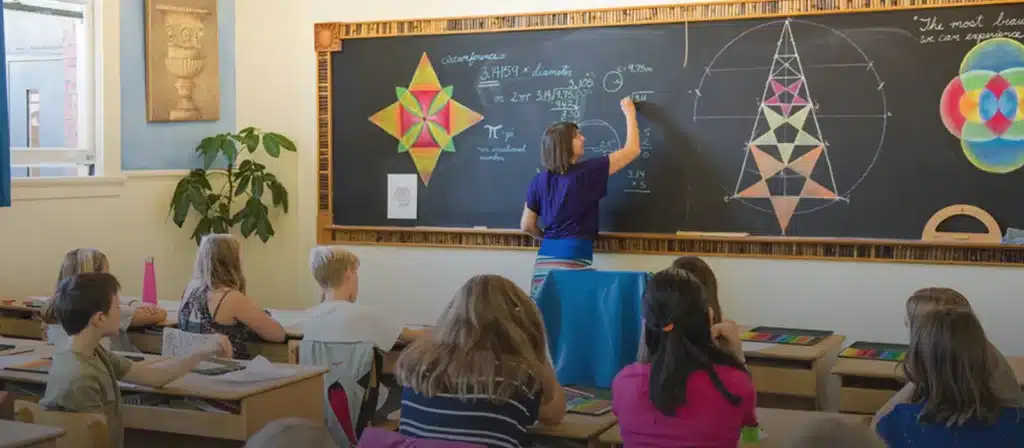
- Developmental Guides: They tailor teaching methods to align with the specific developmental stages of their students, understanding their emotional, intellectual, and physical growth needs.
- Long-term Relationships: Waldorf teachers often stay with the same class for several years, fostering deep connections and a stable learning environment.
- Role Models: Teachers are expected to continuously develop themselves personally and professionally, embodying the qualities they aim to instill in their students.
- Cultural and Artistic Mediators: They introduce a wide range of cultural and artistic experiences, nurturing students’ appreciation for creativity.
- Emotional and Social Supporters: Teachers provide significant emotional and social support, managing classroom dynamics and nurturing positive relationships.
- Curriculum Designers: They can design and adapt the curriculum, allowing creativity and responsiveness to class needs.
- Spiritual Stewards: Teachers help students explore deeper life meanings in a non-dogmatic way, supporting their spiritual development.
How Does Waldorf Education Compare to Montessori Education?
Waldorf and Montessori education focus on child-centered learning but differ in methods and philosophies. Montessori emphasizes independence and self-directed learning, while Waldorf focuses on imagination and artistic expression. Each approach has unique strengths and can be suitable for different learners.
How to Learn More About Education Systems
If you would like to learn more about resources for early childhood education or would like to purchase classroom furniture for your preschool, please contact Xiha Montessori.
We have over 20 years of experience in the early childhood education industry and understand the various education systems, such as Montessori, Reggio, etc. If you need classroom furniture, we will provide a one-stop service based on your kindergarten’s education system and customized classroom and furniture design to meet your needs.
More Related Questions
What Role Does Community Play in Waldorf Education?
Community is a cornerstone of Waldorf education. Schools often have strong connections with families and encourage parental involvement. This sense of community helps create a supportive environment where students can thrive. It also fosters social skills and a sense of belonging among students.
How Does Waldorf Education Handle Academic Subjects?
Waldorf education integrates academic subjects with artistic and practical activities. For example, mathematics might be taught through music or movement, and history might be taught through storytelling and drama. This interdisciplinary approach makes learning more engaging and meaningful.
What Kind of Extracurricular Activities Do Waldorf Schools Offer?
Extracurricular activities in Waldorf schools often include arts, music, drama, and outdoor education. These activities are designed to complement the academic curriculum and foster a well-rounded development of students.
How Do Waldorf Schools Assess Student Progress?
Assessment in Waldorf schools is typically qualitative rather than quantitative. Teachers provide detailed student progress reports, focusing on individual growth and development rather than standardized test scores. This approach aims to give a more comprehensive view of a student’s abilities and achievements.
Are Waldorf Schools Accessible to Children With Special Needs?
Many Waldorf schools strive to be inclusive and accommodate children with special needs. The individualized learning approach can benefit students who require additional support. However, the available support level can vary between schools, so parents need to discuss their child’s needs with the school.
Conclusion
Waldorf education offers a unique and holistic approach to learning that nurtures creativity, imagination, and personal growth. While it may not be suitable for every child, it provides an enriching alternative to traditional education models. By focusing on the whole child, Waldorf education aims to develop well-rounded individuals prepared for the challenges of the modern world.
Considering Waldorf education for your child? Reflect on your child’s needs and learning style, and visit local Waldorf schools to see if this innovative approach resonates with your family values and educational goals.



